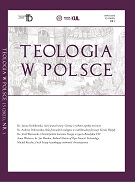W teologicznej refleksji o powtórnym przyjściu Chrystusa wybitni autorzy protestanccy, jak Rudolf Bultmann, wczesny Karl Barth, Charles H. Dodd, podjęli próby interpretacji, które redukowały paruzję z kategorii wydarzenia do kategorii symbolu. Apologiem oczekiwania paruzji stał się natomiast przedstawiciel kolejnego pokolenia teologów protestanckich, Jürgen Moltmann. Debata o paruzji ogniskowała się również wokół interpretacji „przyszłości Chrystusa”: ma być ona jedynie „odsłonięciem” tego, co już zostało całkowicie spełnione w misterium paschalnym (Barth), czy też musi zostać dopełniona przez ideę ostatecznego i definitywnego „wypełnienia” (Moltmann). Wydaje się, że wobec zbyt jednostronnych ujęć Bartha i Moltmanna relacja między krzyżem, zmartwychwstaniem i przyszłością Chrystusa musi znaleźć swoją zrównoważoną artykulację. Poszerzenie zaś refleksji o paruzji na obszar trynitarny, eklezjologiczny, antropologiczny i kosmiczny pozwala na bardziej integralne ujęcie − odnoszące się zarazem do „przyszłości Chrystusa”, jak i do przyszłości ludzkości, historii i całego stworzenia.
The Debate about the Parous ia of Christin Protestant Theology
Summary
The subject of the Second Coming of Christ at the end of time has aroused passionate debate in theological circles in the last decades. The emphasis on demythologisation in modern theology led to a certain scepticism about the Parousia. Some Protestant interpretations reduced the Parousia from the category of event to that of symbol (Bultmann, early Barth), while Moltmann defended the expectation of the Parousia. For Barth the content of “the future of Christ” is only an “unveiling” of what has already been achieved in the paschal mystery. But for Moltmann the category of “unveiling” needs the addition of that of a final and definitive “complement.” Both the unity of and the distinction between the “already” and the “not yet” of the Christ event can apparently be maintained by extending our understanding of the Parousia into the Trinitarian, ecclesiological, anthropological and cosmic areas.
Ostatnia aktualizacja: 06.07.2013, godz. 19:33 - Natalia Haniewska































